Table of Contents
You will find many differing opinions about Wicca, even within certain groups and communities. Many people believe it to be an old tradition that has been passed down through centuries of adherents; right up to modern-day. Others recognize Wicca as a product of Victorian-era ritual magic groups, Wicca being a limb of the practices therein. For some they simply believe it to be a modern example of natural magic religion; one of many influenced by the pagan culture and other older natural practices. No matter how you find yourself starting on this path; it is recommended to get a firm grasp on the history of Wicca, taking what early examples of the religion you can find and developing your own story as to how you came to it.
It is difficult to tell exactly how natural magic practices grow and travel across the world under various names; but we find that the term Wicca has a distinct history that is actually not that old.
History
Wicca as a specific religion is quite obviously influenced; by natural magic techniques found in many parts of the world, namely pagan beliefs and practices that are mysterious; and hard to pinpoint in themselves. These pagan influences were quite prominent in spiritual communities in the 1800s and 1900s as secret groups began to form; seeking knowledge of the universe through ancient practices. More than ever before, magical books are being translated and distributed; offering a melting pot of spiritual insight all over Western Europe and the young United States.
This Victorian era of magical groups brought about many that are still practicing today; including Golden Dawn, Theosophy, and Thelema, only to name a few. These groups shared ideas and saw many members come; and go as leaders fell and subsets formed in various smaller communities. This magical resurgence found itself taking insight from all major ancient societies; we see Egyptian influences, Indian influences, and Jewish influences through the Kabbala. These groups adhered to a hierarchal structure with members having to prove themselves worthy of advancing through the ranks to reach heightened spiritual insights.
As this magical wave peaked, many groups disbanded; or became ever more secretive in their efforts, often feuding among themselves or disagreeing over certain practices. As these groups became less popular, and the fad of magic left many people’s minds, we see even smaller; more specific groups being formed through the 20th century. From these, we can find Wicca, which has become one of the most popular; and widely practiced of the groups influenced by the Victorian era of magic.
Early Wicca
Experts agree that proper Wicca was developed in the early 1900s, around 1920 or 1930, in England. Gerald Gardner is thought to be the creator of this religion, coining the name; and publishing some of the most well-known writings on the practices. Although there is evidence of similar practices from this time frame; Gardner is still recognized as the main leader of Wiccan practices.
Gardner was influenced greatly by the Victorian era magical groups and their ritual practices. He was notably influenced by Aleister Crowley, inventor of Thelema. Crowley was certainly the most influential magician of the past two centuries, ushering in a powerful current of magical practice; and unorthodox approaches. Gardner was inspired by these magical groups but may not have found what he was seeking inside of just one community. As Gardner set out to develop his own practice; he borrowed from these popular groups in both structure and ritual practice.
Gardner’s Influence
While there is no main leader in Wicca, the practices that Garner developed were published publicly in the 1950s. With the help of Doreen Valiente, these books presented a basic overview of Wiccan practices; with many other more advanced practices reserved for oral tradition. The oral teachings were left to priests and priestesses within the communities to be taught to the dedicated students; who found themselves at gatherings or celebrations. The techniques and practices first published by Gardner became the basis of which all other Wiccan traditions were based upon. There are many subgroups and communities who have slightly differing practices; but it is safe to say that all Wiccan groups are influenced by Gardner, one way or another.
We find that Wicca formed its basic structure on the Victorian ritual magic groups; but there is more emphasis on natural magic. Many of the other magical groups may have used nature for magical purposes; but overall, these groups focused on contact with the heavens, rather than earthly spirits of nature. The use of natural magic in Wicca is based on the idea; that Wicca is a part of a lineage of pre-Christian witchcraft in Europe. This idea is not validated with any historical evidence, but the nature of magic is mysterious and often secretive.
Modern Wiccans
Modern Wiccans believe that they are carrying on this lineage of witches; who are not satanic or evil but aim to commune with the spirits of nature and discover the secrets that are held there. We may not be able to confirm that Wicca is a direct lineage of ancient witchcraft; but we can say that these practices have been performed for centuries before the advent of Wicca as a modern religion. No matter how it arrived here, it is a potent source of insight, and as a practice, it is effective.
Pagan Culture
Whether or not the first Wiccans are true receivers of ancient religion is up for debate. Some believe that they are blood relatives of witches from centuries ago; while others believe they uphold the lineage through the practice itself. Gardner promoted the idea that Wicca was a true lineage of old witchcraft. Two popular books published by Gardner; The Meaning of Witchcraft and Witchcraft Today, both contain passionate adherence to the idea that Wicca is a continuation of witch cults in ancient Europe. Modern scholars point out that the structure; and practices that Gardner promotes are more akin to Freemasonry or Golden Dawn practices rather than early witchcraft practices. These scholars also mention the very slim chance that Wiccan is derived from the pagan culture since the pagan societies were much more intense in ritual practice; and lifestyle.
In response to the skeptics, Gardner claimed that he was initiated into a coven in the 1930s; which taught him the practices of ancient witch cults. There is no documentation for this event, but we must keep in mind the secretive nature of these groups. Gardner founded his own coven in the 1940s; supposedly based on what he had learned in the other coven, eventually leading to the publication of his books in the 1950s. This decade saw many laws against witchcraft being lifted as many leaders found the practices to be superstitious in nature. This actually boosted Wicca’s popularity, and Gardner could openly publish his works without fear of breaking laws.
Wicca Boom
The drastic social change that came along with the 1960s was the perfect recipe for a Wicca boom. As many young people in Europe and America were seeking alternative lifestyles and spiritual practices, they found Wicca as an oasis in a corrupt world. Hipped aesthetic and a natural approach to living found Gardnerian Wicca being taken and transformed into a variety of different sects, such as the notable Alexandrian Wicca, which focused more on ceremonial magic similar to the Victorian groups.
Wicca finds itself traveling abroad in the 1970s, permeating American culture further and reaching Australia, as well. Wicca was more easily approached than the term ‘witchcraft,’ the latter often being attributed to evil magic or cruel practices. This is a stereotype that should be ignored. We see other spiritual practices traveling across the globe during this era as well. Indian and eastern practices like yoga and meditation are becoming popular in western societies, and naturally, Wicca merges with these concepts. Environmentalism and new political ideas are forming as well, all having their place in Wiccan communities, even breaking apart groups over differing opinions. The 1970s are when we see dozens of different Wiccan groups forming, all finding specific niches and philosophies to suit the adherents. Gardner’s basic structure is at the core of these new groups, but personal philosophy and intentions get layered on top, for better or worse.
Wiccan Practices
Along with the various sects of Wicca that branched off from the core teachings, we also see the introduction of self-initiation practices. While many Wiccan purists believe that one cannot be initiated into a spiritual world without the help of true lineage or groups, self-initiation practices have proven successful and just as powerful or many. Individuals who are not okay with hierarchal structures and following a chosen leader opt for the self-initiation rituals, progressing down their path on their own. This is generally accepted in modern times, but there are still many who denounce the self-initiations, claiming that it is not true initiation.
The 1980s saw an influx of ‘witchy’ themes and aesthetics in popular movies and television. Popular culture’s acceptance of the witch helped to popularize Wicca but also offered some shortcomings to the concepts. These shows and movies promoted a very toned down view of the witch, making it a novelty or live-action-role-play of sorts for many communities. This mashing of concepts created even more sects and branches of Wicca, some of them practicing magic, while others were closer to social gatherings with magical themes, rather than actual practice.
Wicca in the Internet Age
As the internet age approached, the globalized appeal of witchcraft and Wicca came to fruition. The internet allowed millions of people to connect and share ideas; this leads to the New Age movement, focusing on energetic models and widely abandoning ritual practice. We also see a new type of magical philosophy develop under the name Chaos Magic. This practice utilized technology and adopted many different magical techniques from various practices to find what works best.
Many Wiccans of the 70s and 80s moved to the New Age and Chaos practices, abandoning Wicca and its core teachings. We see the practitioners spread thin across this vast spectrum of magical labels and groups, further segregating the communities. This also leads to a greater number of lone practitioners looking for self-initiation rituals. The popular ‘spiritual scam’ that tagged along with the internet and New Age groups shed light on the true intention of many groups. Sexual abuse, money scams, and cult-like leaders are all revealed as an all-too-common aspect of magical communities. This growth in danger of the practices made the self-initiation path the safest for many, especially women and young people.
Contemporary Times
In contemporary times, we see magical groups in full force. There are thousands of philosophies and communities, all with varying sects. Social media is flooded with magical themes and aesthetics. How many of these people actually practice magic? It is hard to say. Nonetheless, the current is alive, and Wicca is still among some of the most prominent religions that people are attracted to. Even many celebrities are open about their practices, promoting their religions and communities. Only time can tell where Wicca’s place is in the modern magical sphere. With all the distinct practices and technology growing further toward scientific reliance, Wicca remains humble and sticks to its convictions since the time of Gardner. These practices find their roots in ancient traditions, and they are certainly not going away anytime soon.

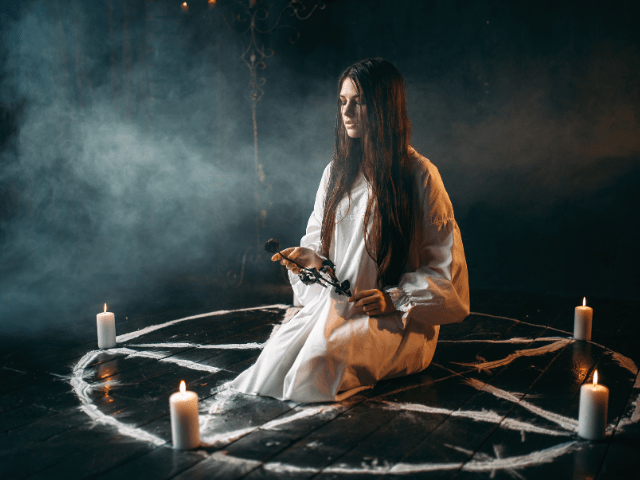
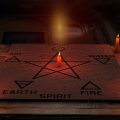
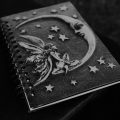
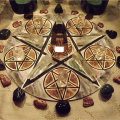
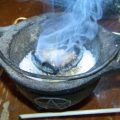
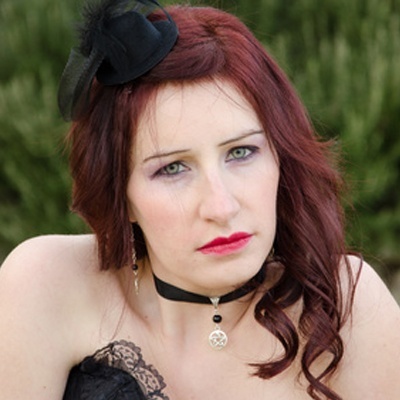 I love to write books about alternative religion, occult, and spirituality. My books are written for everyone in an easy to read and understandable style.
I love to write books about alternative religion, occult, and spirituality. My books are written for everyone in an easy to read and understandable style.